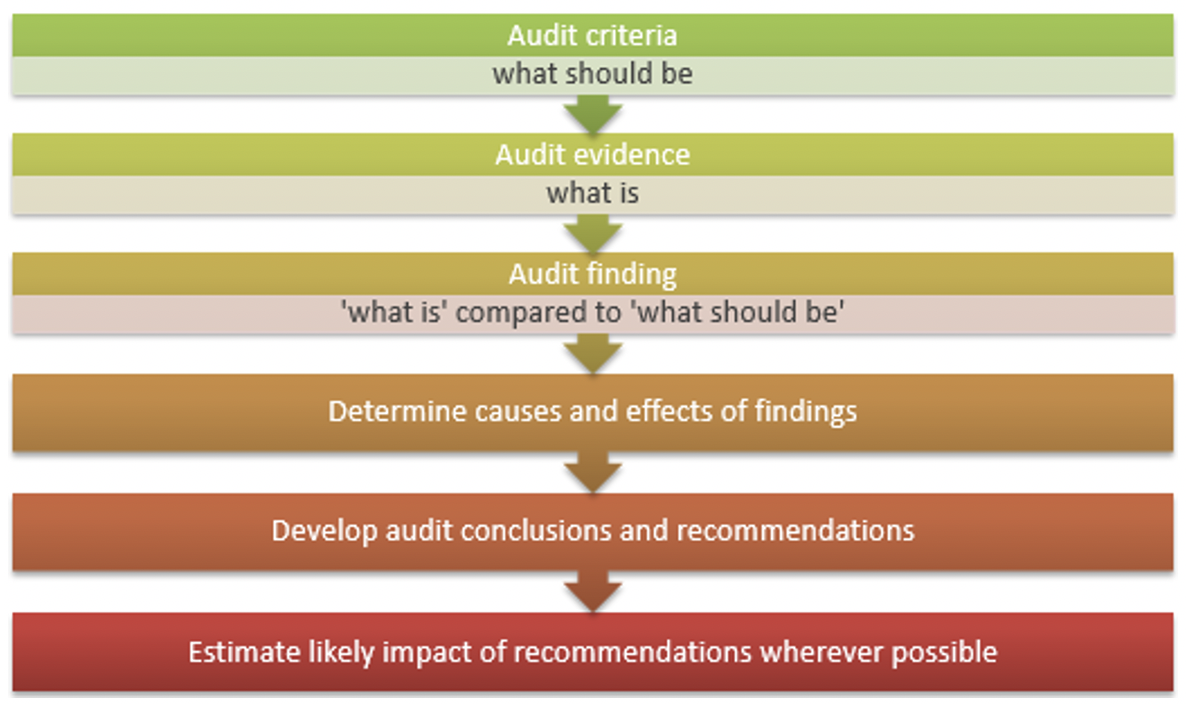MOOC: Introduction to environmental auditing in the public sector
4.1. Field work and analysing results
Field work
If the planning phase has been successfully completed and approved by the management, it is now time to implement the plan and do the so called field work. During a field study, auditors conduct a number of interviews, collect and analyse various documents and receive information in other formats.
Environmental auditors might need to go to the field in reality – to make observations, e.g. whether environmental projects have been implemented or what the situation in nature is. Field work might include visiting wastewater treatment plants or waste treatment sites to see them functioning, observing the situation in natural parks or inspecting land use practices.
Before going into the field, it is important to be prepared, e.g. to get acquainted with the situation or the certain project/case study, observe the location (from maps or orthophotos), prepare questions for auditees/interest groups.
 |
Audit example – site visit
Video: Hazardous waste treatment site visit (2:37) |
 |
Tip for an auditorUsually, auditors do not need to go into the field, but doing so offers a better understanding of ‘real life’ and provides an opportunity to speak with people whose daily work is related to the topic or who are influenced by the issue under the study (for example local people). It also demonstrates that auditors do not hesitate to learn about the problems on site. |
Documentation
Auditors should adequately document the audit evidence in working papers. Working papers are the auditor’s principal record of the work performed and the conclusions reached on significant matters. Working papers provide evidence of the auditor’s exercise of due care and help the auditor conduct and supervise the audit. Each institution/SAI develops its own techniques to prepare, review and file working papers, generally based on its experience and its particular needs and environment.
The elements of the working papers are:
- Question and criteria to be answered (related to ADM)
- What and how did we analyse?
- What are the findings and evidence?
- Conclusions
 |
Tip for an auditorAll audit evidence should be documented and stored properly, e.g. photos of the site visit. |
Analysing results
All of this data needs to be sorted and analysed to determine what is relevant and to be able to evaluate the situation in the audited sector.
ISSAI 3000 describes the process of comparing audit evidence with criteria and drawing conclusions.

Analytical steps to reach audit conclusions. Based on ISSAI 3000: Performance Audit Standard
When the auditor compares the audit evidence gathered with the criteria and discovers deviations, these are the findings. When analysing audit evidence and findings, you need to check which criteria have been met. As a result of this study, you will be able to derive an answer to your audit questions and draw conclusions.
Analysing relationships between audit questions, sub-questions and criteria:

During analysis, we need to pay attention to the quality of data. Conclusions are only as good as the quality of the information itself. Auditors often have to limit themselves to criticising the quality of data, which does not allow further conclusions to be drawn.
 |
Audit example – quality of data
The National Audit Office (NAOE) audited the processing of hazardous and radioactive waste. Conclusion: “The state’s waste reports do not recognise hazardous waste generation and treatment data correctly. The quantities recovered and disposed in the period under review were not as big as indicated in reports. For example, the scale of recovery recognised in the state’s report for 2013 is larger than the quantity of untreated hazardous waste by one-fifth, and twice as big as the real quantity at the end of the year. During the audit it was found that the balances at the end and beginning of the year indicated in the state’s waste report do not tally with each other (the difference being thousands of tons), which suggests that data upon the acceptance, transfer and treatment of waste are inaccurate.” (read more) |

